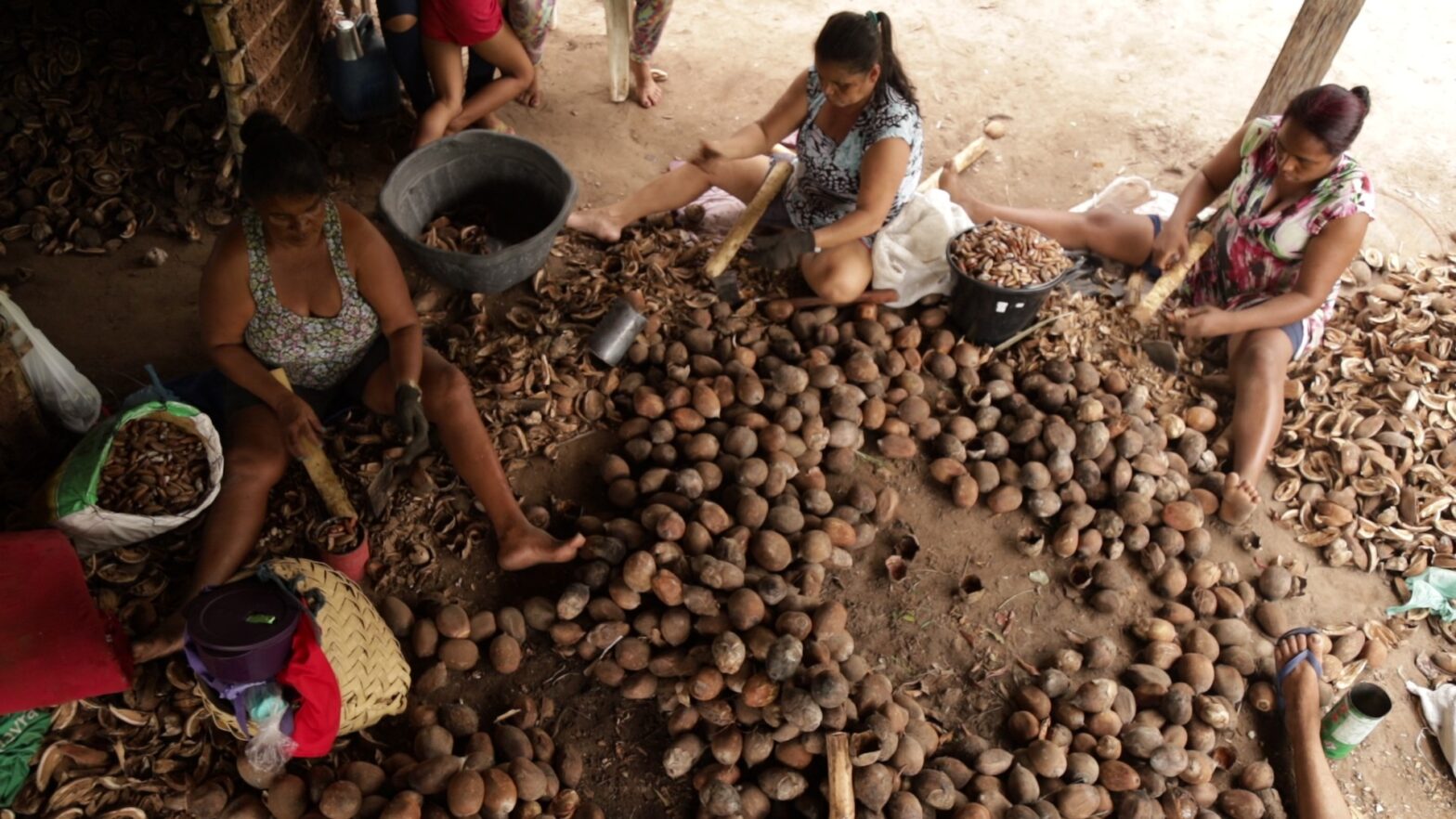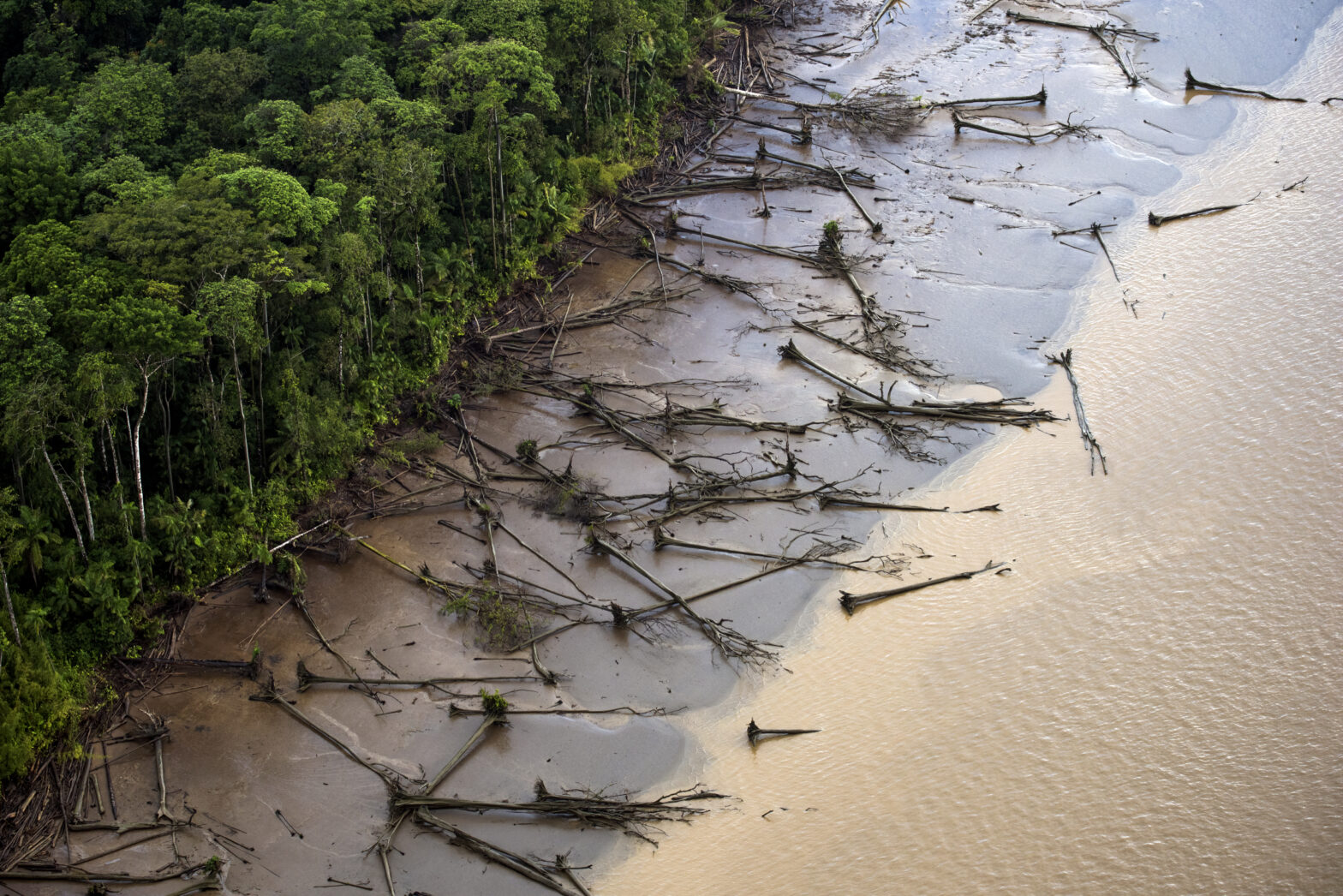Chelonians, which include turtles, terrapins and tortoises, have been part of the local population’s diet since colonizers arrived on the Amazon River. That meat has become common on people’s tables, especially in riverside and traditional communities. However, deficient law enforcement in remote areas and poaching threaten species and Amazon biodiversity.
Eating chelonians, which include turtles, terrapins and tortoises, is a common cultural habit among riverine and traditional communities in Brazil’s Amazonas state. Residents interviewed by InfoAmazonia say that their meat is “rarely consumed” but essential for the local populations. Exploiting these animals as a source of subsistence is controversial, but the threat to biodiversity lies in poaching, according to the Amazonas State Police Environmental Corps (BPAmb): between 2013 and 2023, 4,551 animals were seized from poachers in the state.
However, these figures point to underreporting of poaching as a result of deficient law enforcement in remote areas of the state. Biologist Willandia Chaves is a researcher at the Department of Fish and Wildlife Conservation at Virginia Tech University in the US. In 2021, she led a study on the real figures of turtle meat consumption in Amazonas. The survey found that 1.7 million individuals were consumed per year on average. The state capital Manaus accounts for about one third of that.
Chaves’s research contrasts with official data, which, in addition to being much lower than the figures found by the study, fluctuate from one year to another. For example, in 2021, when Chaves estimated an average in the millions, there were 183 seizures in the state, according to BPAmb.
The Environmental Police told InfoAmazonia that “they have been conducting report-based enforcement as well as joint operations with environmental protection agencies.” They say that violators are interested in these animals especially to sell their meat and eggs. InfoAmazonia insisted several times, both by phone and email, to understand the criteria – frequency and personnel – for law enforcement operations in the state, but the state agency did not respond until publication.
At federal level, the authority responsible for actions involving wildlife control is the Brazilian Institute of Environment and Renewable Natural Resources (Ibama). Data on seizures of chelonians is not available on the agency’s website. InfoAmazonia sent questions and number requests to the agency’s office in Brasília but received no response until this story was published.
Table habits
In the Amazon, we find several species – such as the Amazon turtle – which can reach up to 35 inches and weight 140 pounds, laying between 100 and 150 eggs annually. The yellow-spotted Amazon river turtle, known locally as tracajá, in turn, reaches around 20 inches and 26 pounds in its adult life and is distinguished by yellow spots on the heads of young individuals and adult males. The six-tubercled Amazon River turtle, known as iaçá or pitiú, is one of the smallest species of the Podocnemis genus, reaching up to 13 inches and 8 pounds, and laying an average of 16 eggs on beaches during spawning. These three species are among the most often hunted by poachers and, according to ICMBio’s data platform Salve, they are on the list of near-threatened animals in the biome.
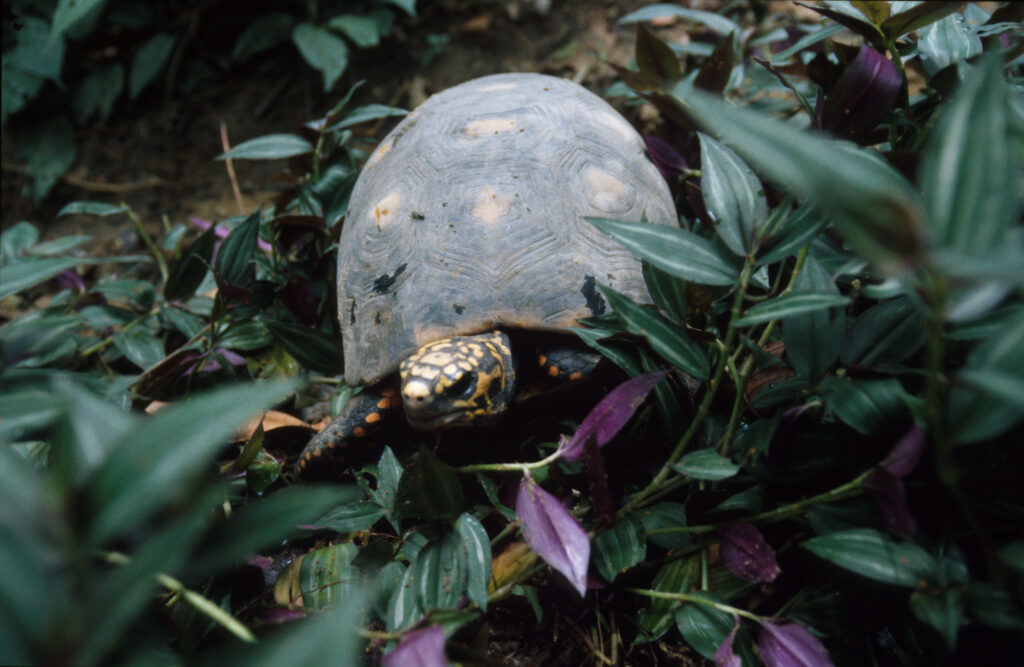
Eating these turtles has been part of daily lives of Amazonians since at least the 16th century, when colonizers arrived at the Amazon River and found the forest inhabited by indigenous people.
InfoAmazonia went to the Port of Manaus and to Modern Manaus – the busy central area of the Amazonas state capital. Eighteen-year-old Marco Antônio Costa de Souza is self-employed and a member of the Sateré Mawé indigenous group. He was born in the city and admits to having eaten yellow-spotted and Amazon turtles. For him, that food is served only on important occasions such as birthdays of indigenous relatives or end-of-the-year holidays.
“My grandmother used to prepare indigenous recipes with turtles, it was a cultural habit at home. That reminded her of her roots. She married my grandfather, who was of Portuguese descent, so she chose to preserve this custom in the family. My family rarely eats it, just like me. Especially because we are aware of the need to preserve it,” he said.
Currently living in a riverside area in the municipality of Autazes (70 miles or 111 km from Manaus), 37-year-old Denise Magalhães dos Santos works as a cashier. She also says that she has eaten yellow-spotted turtle meals and agrees with Souza: “It’s a tradition to eat it as part of the daily lives of riverine communities. Not that we eat it often; it’s more common at the end of the year or when we go hunting sometimes,” she says.
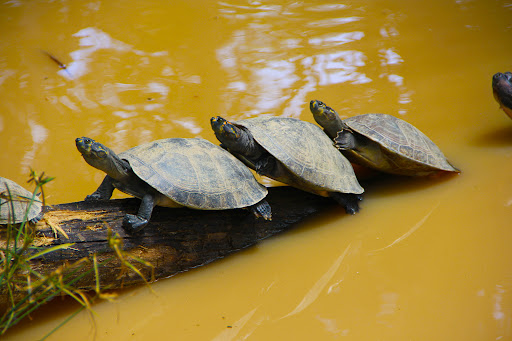
Orlandina Silva de Almeida, a 57-year-old domestic worker, points to another common reason for eating these animals: lack of other foods. She says that she has lived in riverine communities and that food insecurity often worries the population, who then resort to game meat.
“I’ve lived in the small towns of Amazonas. I’ve even eaten yellow-spotted turtles and also turtle eggs. It didn’t use to be banned as it is now. At the time, when my father lived there, it wasn’t. This is the diet of riverine communities in Amazonas (...) When I ate it, it was a matter of necessity. Food can be scarce sometimes for people living in remote areas, so they eat whatever is available,” she explained to InfoAmazonia.
The Environmental Crimes Act 9605 of 1998 considers the unauthorized removal of chelonians from the wild and the trade in these animals as environmental violations. Failure to comply with that legislation may result in six months to one year in prison, in addition to fines. However, there is an exception when hunting is carried out for food, that is, to feed hunters or their families.
The punishment can be increased by 50% if the crime is committed against rare or threatened species. That also applies during periods when hunting is banned, inside conservation units or with the use of methods that may cause mass destruction. In the case of environmental crimes during professional hunting, the punishment is tripled.
Threat to the ecosystem
Paulo Andrade has a PhD in Freshwater Biology and Inland Fisheries from the National Institute for Amazonian Research (Inpa). He is a professor at the Federal University of Amazonas (Ufam), with experience in breeding and managing wildlife, including chelonians. He states that unrestrained human interference can trigger imbalance in the ecosystem, as these species play a crucial role in the animal food chain.
Fish such as arowanas and piranas feed on turtles, as do alligators, hawks and even mammals such as white-eared opossums, jaguars and margays. This is the cycle that maintains Amazon wildlife, in which one living being serves as food for another.
“Here in the Amazon, young chelonians, eggs, and adult and subadult individuals themselves serve as food for other species, both in the aquatic and the terrestrial environment, in beaches’ transition zones where chelonians live. Therefore, hatchlings – of Amazon turtles, for example – and eggs are a source of protein for several animals,” explains the researcher.
Another ecological role played by chelonians, according to Andrade, is the dispersal of seeds in nature, contributing to regenerate forests and natural areas. This function is crucial for preserving biodiversity as these animals feed on a variety of fruits, vegetables and leaves, creating ideal conditions for seed germination after digestion.
“The main environmental impact of chelonian poaching is to remove this food source that is at the base of the food chain for other animals. Where there are more chelonians, there is more of everything – more fish, more alligators, more water birds, among others. It’s a multiplier effect. And when there is none, that is, when there is poaching, everything decreases almost to the point of extinction in the area. The other species that feed on these animals will feel it and, consequently, their number will be greatly reduced,” the researcher stresses.
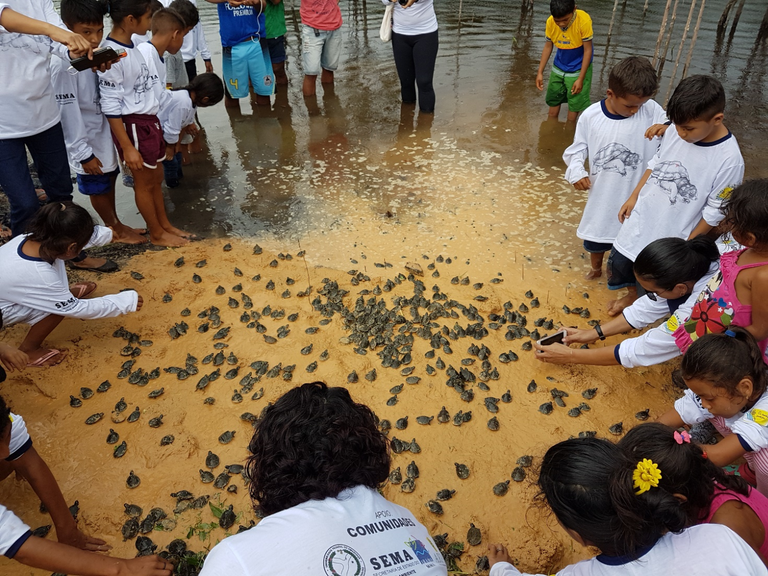
Andrade is also the head of the Pé-de-Pincha Project, founded in 1999 in the municipality of Terra Santa, Pará state. The project works on community conservation of turtles in around 20 towns in Amazonas, carrying out social activities to raise the population’s awareness about preserving them. This includes environmental education lectures for children as well as management and release of chelonians.
“The work [of the project with the community] provides protection especially during the reproduction period, to prevent adult individuals from being captured, eggs from being removed, and young turtles from being sold,” he says.
The State Environmental Department (Sema) says that it works to protect and increase chelonian species in Amazonas state rivers. This activity has the support of Volunteer Environmental Agents trained by the department, community residents and, in some Conservation Units, members of the Pé-de-Pincha Project.
The staff travels along beaches, fields or slopes in search of the holes where females lay their eggs while they move on the rivers. When they are found, the holes are demarcated and monitored until the eggs hatch. In situations of greater threat, the eggs are relocated to ‘nurseries,’ which are environments reproducing the animals’ natural habitat.
After hatching, they are transferred to tanks where they remain for 60 days until their size is safe for release. Since the beginning of the project in 2018 until 2023, 1.9 million chelonians were returned to the wild in the 14 State Conservation Units that carry out monitoring.
This story is the result of training carried out by InfoAmazonia as part of the Together for Conservation project, implemented by Internews in alliance with USAID and WCS. The content is under the responsibility of InfoAmazonia and Internews and does not necessarily reflect the views of WCS, USAID, or the United States government.



